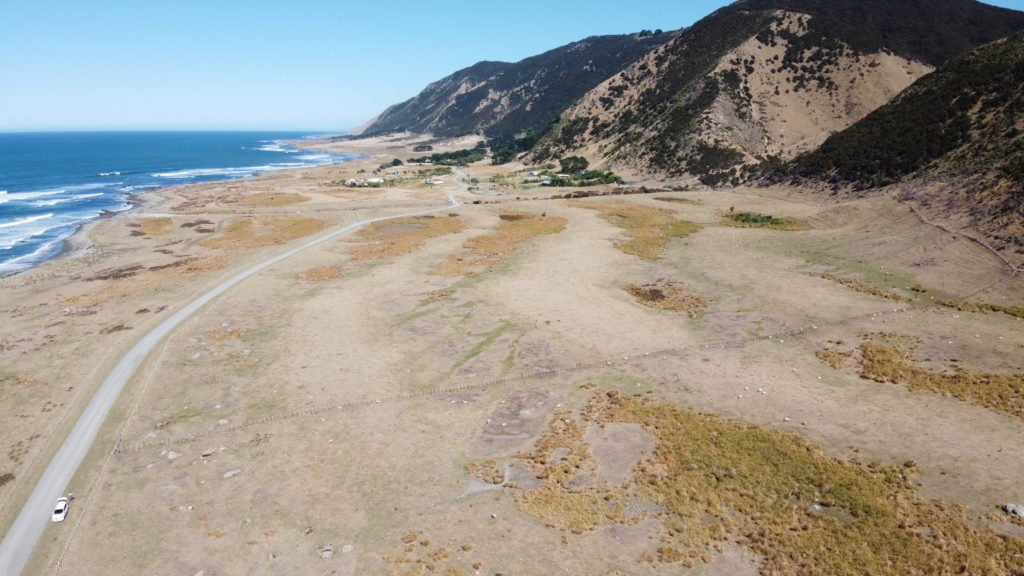What’s on our Plates?
New Zealand has thousands of active faults each of which will produce an earthquake of some magnitude when it ruptures. However the two giants are the Alpine Fault and the Hikurangi Subduction Fault. They each form a segment of the plate boundary – the Alpine Fault can be traced across land, the length of the South Island, whilst the Hikurangi Subduction Fault is lying in wait under the Eastern part of the North Island, with its surface trace hidden deep underwater along the bed of the Hikurangi Trough and Kermadec Trench. Kekerengu Fault rupture in Nov 2016 (J.Thomson / GNS) Each of these plate boundary faults is capable of causing a massive earthquake greater than magnitude 8, thereby wreaking major destruction and disruption across New Zealand. It makes sense then that a lot of research effort is going in to understanding the past history of these faults. This allows us to gain insight into the probabilities of future ruptures and the sorts of impacts that could occur when one or the other of them next produces a big ‘quake. It also makes sense that if you are living in New Zealand, you should be interested in learning about how the scientists go about their research and what they have been discovering! What’s On Our Plates? is a set of free multimedia learning modules designed to enable anyone to explore Aotearoa New Zealand’s active plate boundary online, including the Alpine Fault and Hikurangi Subduction Zone. The modules are for any interested non specialist who would like to know more about out Plate Boundary research, but they also include notes for teachers who would like to use them as an educational resource. So get ready to dig in to the fascinating story of our two colliding tectonic plates. You can access the modules here. The resource has been created by a collaboration of AF8 (Alpine Fault Magnitude 8) and East Coast LAB (Life At the Boundary). AF8 is undertaking a comprehensive study of the impacts a rupture of the Alpine Fault would have on infrastructure and the people living in communities across the South Island. It is a collaboration between the South Island Civil Defence Emergency Management (CDEM) groups and scientists from six universities and Crown Research Institutes, emergency services, lifelines, iwi, health authorities and many other partner agencies. The programme is managed by Emergency Management Southland. East Coast LAB (Life at the Boundary) is also a collaborative programme. It brings together scientists, emergency managers, experts and stakeholders across the East Coast to help us better understand and prepare for the natural hazards such as earthquakes and tsunami that may affect us. https://youtu.be/L8UXkQmbHZw
What’s on our Plates? Read More »





